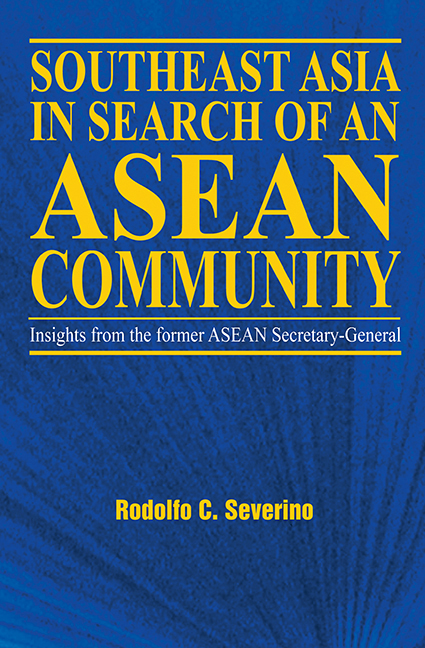Book contents
- Frontmatter
- Contents
- Foreword
- Introduction
- About the Author
- Acknowledgements
- Glossary
- 1 The “ASEAN Way”: Its Nature and Origins
- 2 Who Belongs in ASEAN? The Question of Membership
- 3 The Issue of Non-Interference
- 4 Regional Security: The ASEAN Role
- 5 Integrating the Regional Economy
- 6 ASEAN and the World
- 7 The ASEAN Community: Is It for Real?
- 8 What Kind of Future for ASEAN?
- Appendices
- Interviews
- Index
8 - What Kind of Future for ASEAN?
Published online by Cambridge University Press: 21 October 2015
- Frontmatter
- Contents
- Foreword
- Introduction
- About the Author
- Acknowledgements
- Glossary
- 1 The “ASEAN Way”: Its Nature and Origins
- 2 Who Belongs in ASEAN? The Question of Membership
- 3 The Issue of Non-Interference
- 4 Regional Security: The ASEAN Role
- 5 Integrating the Regional Economy
- 6 ASEAN and the World
- 7 The ASEAN Community: Is It for Real?
- 8 What Kind of Future for ASEAN?
- Appendices
- Interviews
- Index
Summary
The previous chapters have shown that, generally, ASEAN has served its members well. Out of the contention of the past, ASEAN has fashioned a region in which armed conflict between nations is all but unthinkable. As I assert elsewhere in this book, it has been ASEAN's supreme achievement that it has provided a setting for the peaceful management of disputes among its members. The constant interaction and sense of common purpose among the ASEAN members have built mutual confidence and dissipated some of the mutual suspicion that is a legacy of past differences and an outgrowth of current disagreements. A growing sense of community and networks of personal contacts have not only prevented conflict as a solution for disputes but have also fostered cooperation for certain common goals.
The ASEAN countries have worked together to uphold what they perceive as the regional security interest. ASEAN's solidarity helped settle the problems posed in the 1980s by the Cambodian situation and the Indochinese asylum-seekers. After these were resolved, ASEAN moved quickly to heal the division of Southeast Asia by bringing the rest of the region into itself. Through the Southeast Asia Nuclear Weapons-Free Zone, ASEAN has contributed its share to the global non-proliferation regime.
Partly through the Treaty of Amity and Cooperation in Southeast Asia and partly through its own practices, ASEAN has set regional norms for the peaceful relations among states — respect for sovereignty and territorial integrity, the peaceful settlement of disputes, non-interference in the internal affairs of nations, decisions by consensus, equality of status, and so on. It has sought to extend these norms for others’ adherence by encouraging non-regional states to accede to the treaty; ten have done so. In the same spirit, ASEAN has initiated forums for consultation, dialogue and confidence building with creativity, flexibility and pragmatism and in a non-confrontational way. Through the system of Dialogue Partners, the ASEAN Regional Forum, ASEAN+3, and now the East Asia Summit, ASEAN engages the major powers and others with interests in the region in confidence building, conflict prevention and cooperation in a wide range of areas. At the same time, it has allowed enough space for its individual members to enter into security arrangements with non-regional powers without threatening fellow-members. It has reached an understanding with China on the South China Sea, even if one that is well short of resolving the jurisdictional issues.
- Type
- Chapter
- Information
- Southeast Asia in Search of an ASEAN Community , pp. 372 - 387Publisher: ISEAS–Yusof Ishak InstitutePrint publication year: 2006

